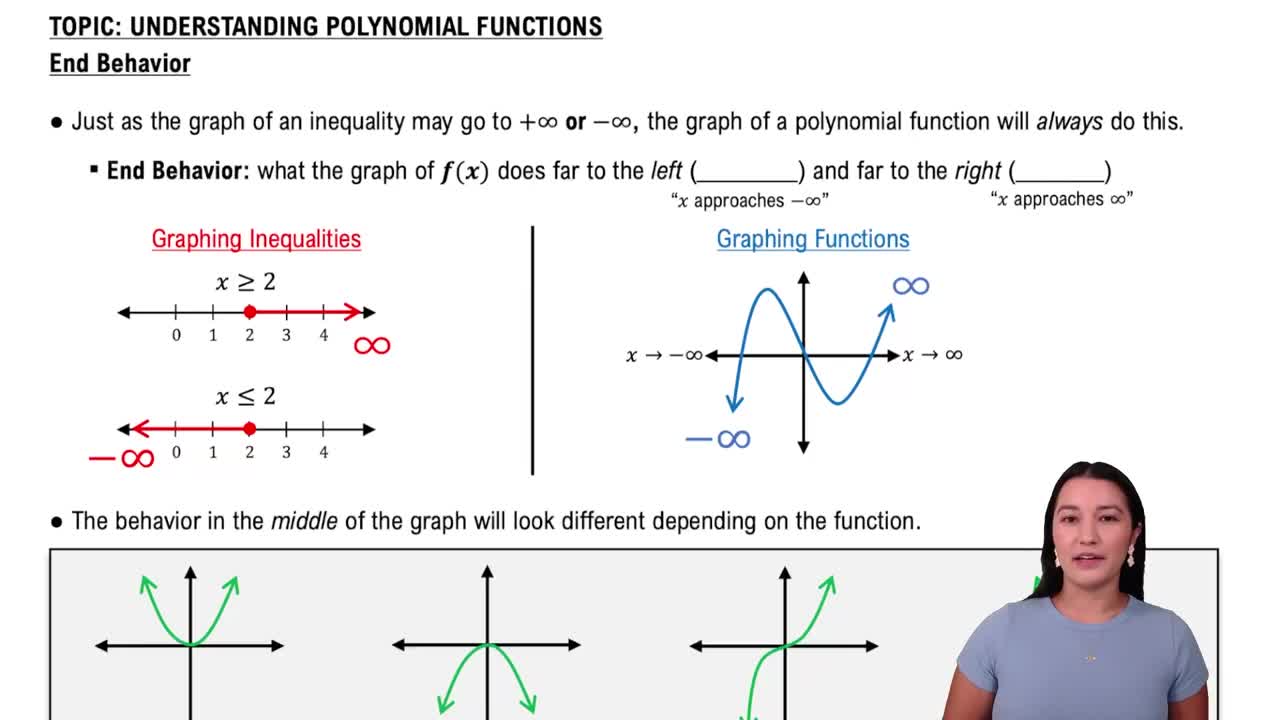Here are the essential concepts you must grasp in order to answer the question correctly.
Zeros of a Function
A zero of a function is a value of x that makes the function equal to zero. For the function ƒ(x)=(x+2)^4(x-3), the zeros are found by setting the function equal to zero and solving for x. The zero at x = -2 occurs when the factor (x + 2) is equal to zero, indicating that the function crosses the x-axis at this point.
Recommended video:
Finding Zeros & Their Multiplicity
Multiplicity of Zeros
The multiplicity of a zero refers to the number of times a particular zero appears as a factor in the polynomial. In the case of ƒ(x)=(x+2)^4(x-3), the zero at x = -2 has a multiplicity of 4 because the factor (x + 2) is raised to the fourth power. This means that the graph of the function touches the x-axis at x = -2 but does not cross it.
Recommended video:
Finding Zeros & Their Multiplicity
Polynomial Behavior at Zeros
The behavior of a polynomial at its zeros is influenced by the multiplicity of those zeros. If a zero has an odd multiplicity, the graph crosses the x-axis at that zero, while an even multiplicity means the graph touches the x-axis and turns around. For the zero at x = -2 with multiplicity 4, the function will touch the x-axis and remain above or below it, confirming that the statement about the zero is true.
Recommended video:
End Behavior of Polynomial Functions



